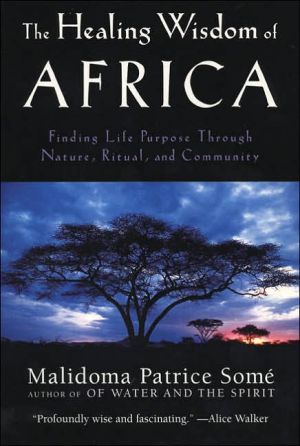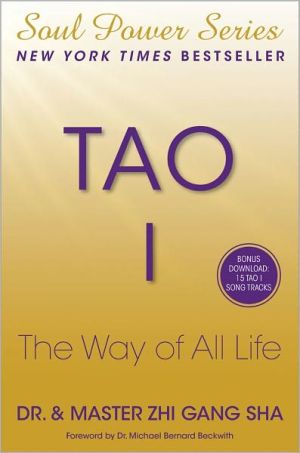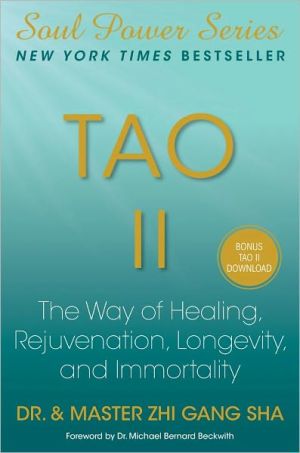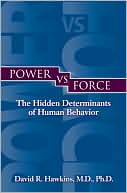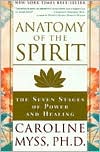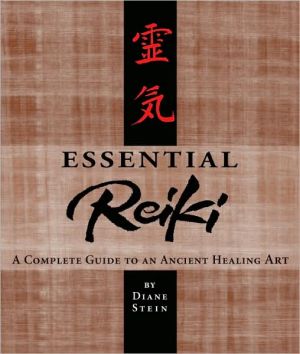The Healing Wisdom of Africa: Finding Life Purpose Through Nature, Ritual and Community
Through The Healing Wisdom of Africa, readers can come to understand that the life of indigenous and traditional people is a paradigm for an intimate relationship with the natural world that both surrounds us and is within us. The book is the most complete study of the role ritual plays in the lives of African people—and the role it can play for seekers in the West.
Search in google:
A fascinating, detailed journey through the traditional healing practices of West Africa by a beloved shaman and scholar."Profoundly wise and fascinating . . . "--Alice Walker"An amazing bridge over the chasm of modern isolation."--Jack KornfieldThrough The Healing Wisdom of Africa, readers can come to understand that the life of indigenous and traditional people is a paradigm for an intimate relationship with the natural world that both surrounds us and is within us. The book is the most complete study of the role ritual plays in the lives of African people--and the role it can play for seekers in the West. * illustrated with 8 pages of black-and-white photographs
\ \ \ \ \ Chapter One\ \ \ Healing, Ritual,\ and Community\ \ \ \ ... beneath the skin, beyond the differing features\ and into the true heart of being,\ fundamentally, we are more alike, my friend,\ than we are unalike.\ \ \ \ —MAYA ANGELOU\ \ \ What the indigenous world offers to the modern world centers around the understanding of the concepts of healing, ritual, and community. Indigenous communities have since time immemorial focused their lives and their existence on these issues. Healing is central, because it was learned very early that human beings are vulnerable to physiological and biological breakdown, and that this general instability touches all aspects of their existence. They have also learned that the natural environment in which they live is made up of subtle invisible things that, if manipulated in certain ways, can affect the conditions that they intend to heal. Ritual is the technology that allows the manipulation of these subtle energies. Community is important because there is an understanding that human beings are collectively oriented. The general health and well-being of an individual are connected to a community, and are not something that can be maintained alone or in a vacuum. Healing, ritual, and community—these three elements are vitally linked.\ Healing, ritual, and community—the goods that the indigenous world can offer to the West are the very things that the modern world is struggling with. Ritual in the indigenous world is aimed at producing healing,and the loss of such healing in the modern world might be responsible for the loss of community that we see. The problems experienced in the West, from the pain of isolation to the stress of hyperactivity, are brought on by the loss of community.\ The problems that come from the loss of ritual are less clear, but it is the absence of ritual that the West is struggling with, the loss of connection with the unseen aspects of the natural world that have the ability to bring the needed healing. The West is also struggling with a confusing notion of ritual, for the word usually refers to some sort of dark, pagan, and archaic practice that has no place in modern society. The only accepted rituals are ceremonial practices with clearly predictable content and outcome, such as what can be seen in the Sunday church service of one of the organized religions. When we talk of ritual here we are talking about something much deeper. We are talking about the weaving of individual persons and gifts into a community that interacts with the forces of the natural world. We are talking about a gathering of people with a clear healing vision and a trusting intent toward the forces of the invisible world.\ What villagers bring to a ritual are trust that the invisible forces will heal and the knowledge of what needs healing. These are the only things they know ahead of time; the rest, the shape and outcome of the ritual, is put in the hands of the Great Ones. The road from the felt need for healing to the healing itself is paved with gestures, touch, sound, melody, and cadence, and most of these are spontaneous activities, unpredictable in their outcomes. When villagers act together on their need for healing and engage in such spontaneous gestures, they are requesting the presence of the invisible forces and are participating with those forces in creating a harmony or symbiosis. This partnership replenishes each person by restoring his or her relationship to nature, for among indigenous people the natural world and the Spirit World are closely related, as we will see. Ritual is an art, an art that weaves and dances with symbols, and helping to create that art rejuvenates participants. Everyone comes away from a ritual feeling deeply transformed. This restoration is the healing that ritual is meant to provide.\ Indigenous people see the physical world as a reflection of a more complex, subtler, and more lasting yet invisible entity called energy. It is as if we are the shadows of a vibrant and endlessly resourceful intelligence dynamically involved in a process of continuous self-creation. Nothing happens here that did not begin in that unseen world. If something in the physical world is experiencing instability, it is because its energetic correspondent has been experiencing instability. The indigenous understanding is that the material and physical problems that a person encounters are important only because they are an energetic message sent to this visible world. Therefore, people go to that unseen energetic place to try to repair whatever damage or disturbances are being done there, knowing that if things are healed there, things will be healed here. Ritual is the principal tool used to approach that unseen world in a way that will rearrange the structure of the physical world and bring about material transformation.\ That we connect with unseen realities, the realities made visible in our symbols, is crucial to the well-being of our psyches. A person who walks through a ritual and ends up feeling charged and invigorated is a blessed recipient of healing waves of energy that no one can see but everyone can benefit from. The full heart of a person blessed in this manner overflows into the needy souls of others, igniting the healing fire most wanted for self-replenishment. Ritual is central to village life, for it provides the focus and energy that holds the community together, and it provides the kind of healing that the community most needs to survive.\ \ \ HUNGER FOR SPIRIT\ The West is hungry for Spirit, for the contact with unseen forces that brings healing. The West's hunger for Spirit, however, comes with cultural constraints. People want to experience the Spirit, the Other World, but they want to experience it on their own terms. People are quick to misunderstand or reject teachings that offer them a world they don't recognize.\ The first time I introduced a ritual to people in this country, I was at once brought face-to-face with this fact. It was a sunny summer afternoon in a natural setting amid impressive redwood trees. It was a men's retreat, and I had chosen to lead the hundred or so men gathered there in a ritual of grieving, the sacred shedding of tears to heal the wounds of human losses. But as soon as I began to speak, I realized these men had no idea why crying was important. As I struggled to make sense of grief, I realized that I was trying to make familiar a concept that is perhaps more remote to modern people, especially males, than I can imagine. I heard myself clumsily argue that to shed tears is to release an energy that otherwise will poison the self. "How do you know that?" retaliated an angry voice inside of me—what I imagined the audience members were saying. I felt deeply embarrassed, for I was sure that my audience was full of experts who had investigated this field long before. Their faces showed none of the enthusiasm that communicates understanding.\ I finally decided that I needed at least to justify why indigenous people do ritual grieving, even if I failed to make it apply to modern people. So I spoke about grief as a cleansing practice that purifies the psyche just as a bath purifies the body. I stated the danger of unexpressed grief, quoting an elder who once said that a man who can't cry is a social time bomb. To my surprise, light began to dawn on the faces of these men as they came to accept the idea of addressing the immense grief buried in their psyches. They understood that they lived in a culture where the expression of grief is almost taboo.\ But actually performing a ritual expressing grief proved even harder for these men than accepting the idea of it. They showed tremendous resistance to taking action and preferred to continue talking about the ritual instead of actually entering into it. To express their grief required them to move out of familiar psychological territory to a place where their sense of control faded away—a place where their vulnerability would emerge with all its terrifying effects.\ That afternoon we gathered to clean up a spot among the trees and to turn it into a ritual space. Working together was invigorating. It was as if the invisible world participated in its own subtle ways, for among the men there was complete cooperation in preparing the ritual space. I sent them out to find each an object among the trees that represented the loss they needed to grieve. This much they did without resistance.\ By then it was dark. The setting of the sun awoke the beings of the night. People's tension rose, as if they felt that these beings saw what was going on and had decided to join in. As we gathered one last time to clear the air before moving on to the ritual proper, various complaints arose. One person expressed his fear of getting into something that might violate his religious beliefs. Another said he was afraid of losing control and therefore leaving the ritual feeling worse than before. These reservations struck a chord with others, who agreed that they thought they had come here to be supported in a safe environment to do safe things.\ I felt helpless. On the one hand I could clearly see that the hunger for ritual was being checked against the prescription of social conditioning. On the other hand, I could not understand why they would want to travel so long together, only to turn back within sight of the destination. I tried my best to calm the terrified and to comfort the confused. I agreed with them that true Spirit is a frightening thing to embrace. But I objected to their need for safety. It became a subject of debate.\ At last one man quoted someone as saying that healing involves taking a risk with the backing of Spirit. I realized, with relief, that I had supporters in the group. My helplessness disappeared as I exhorted the group to have faith in Spirit. The group decided to go forward with the ritual. For four hours tearful voices rose above chants of lament, held together by the regular beat of a drum. These cries—some of them aimed high as though seeking to awake a sleeping god or goddess—were loud enough to bend the tops of many trees, who seemed to echo their sorrow amid the windy darkness. I thought to myself, the darkness has made everyone black; this could be anywhere in Africa. Each hour brought the ritual to its next level of intensity. As people grieved louder, the lament song rose proportionally with the drum. Everything grieved in unison. The Spirit lived among us.\ In the morning we gathered in a room away from the ritual place to share what it felt like to be in a ritual space with others, and particularly how the experience of grieving felt. For most people it was one of the most highly rewarding things they had ever done. They were still surprised at how deeply they had entered into it and were amazed at the amount of grief they had released. True, there were a few who could not get into it, but even they were amazed by what they witnessed in others, to the point that they regretted not being able to grieve. As I listened carefully to each person's comments, I realized how open the room felt by contrast to the tension of the day before. People joked with one another. There was a great deal of humor in the room. They thanked one another for the mutual support and expressed gratitude for the opportunity of taking part in something so powerful. It was obvious that the group had embraced Spirit.\ \ \ HEALING, IDENTITY, AND COMMUNITY\ What was it that urged these people to search for healing? My sense is that the West's need for healing is rooted in crises of personal identity and purpose. Whether they are raised in indigenous or modern culture, there are two things that people crave: the full realization of their innate gifts, and to have these gifts approved, acknowledged, and confirmed. There are countless people in the West whose efforts are sadly wasted because they have no means of expressing their unique genius. In the psyches of such people there is an inner power and authority that fails to shine because the world around them is blind to it.\ This implies that our own inner authority needs the fuel of external recognition to inspire us to fulfill our life's purpose, and until this happens, we wait in paralysis for the redemptive social response that rescues us from the dungeon of anonymity. Our own confirmation or acknowledgment of ourselves is not enough. The need to be acknowledged by the society is so primal that if it does not happen in the village, town, or neighborhood, people will go out searching for it. For many people, the support offered by indigenous ritual satiates the soul by providing it with a sense of connection with a greater dimension.\ A crisis of identity and purpose is an inner burning that is rarely extinguished by a visit to a career-planning office, by graduation from a prestigious school, or even by years in a successful career. It is a hollowness, a void that threatens to erase meaning in everything people do. This hollowness is reflected in the attraction of indigenous rituals for many Westerners. A romantic approach to the indigenous world has compelled some seekers to feel profoundly ill at ease about not having experienced a ritual initiation, as their counterparts in the indigenous world have experienced.\ It is perhaps important to point out that these Westerners may underestimate the depth of their own learning and life experience. Many people would agree that living in the West has its own dangers, which are similar to the dangers to which African youth are exposed during the rituals of initiation. Westerners meet up with tragedy, with powers beyond their control, with challenges that present opportunities for growth and transformation. And these challenges must be recognized as initiatory, even though this initiation is disorganized, unpredictable, and informal, unlike the carefully orchestrated initiatiatory challenges presented to indigenous people. Westerners, like their indigenous counterparts, experience initiation in some form and in a constant manner throughout their life. A person who gets fired at the job faces a life-transforming challenge that must be considered initiatory. A couple facing crisis in their relationship, such as separation or divorce, is on an initiatory path. Initiation is simply a set of challenges presented to an individual so that he or she may grow. Consequently, the troubles we encounter in our paths in the modern world are, in essence, initiatory to the extent that each one of them is life changing.\ What is lacking in this rich life experience is a community that observes the individual's growth and certifies that one has passed through an initiatory process. This would not be the kind of certification that gives a person a title in order to pursue a career, but the mere act of seeing and responding, which enables a person, in powerful periods of growth, to behold voices within confirmed by voices from the community without. The issue for Westerners is not so much the absence of initiation as it is the absence of a community to recognize initiatory passages. Tribal life is full of public ritual initiations marking the various stages of a person's life. From the rituals of birth to the funeral rituals at death, every person's life journey is clearly highlighted with the milestones of transformational rituals. To the extent that these rituals are challenging and involve hardship, they are comparable to the challenges life presents to individuals in the Western world.\ Though we will look further into the dynamics of community later on in this book, I would like to stress at this point that where mentors and elders are lacking, and where initiation in one form or another is not recognized, there can be no support system capable of curbing the intense sense of aloneness that haunts the psyche of the modern person. Only being part of a community will address the loneliness of modern people.\ But I have learned that there is in many Western people a strong resistance to joining community because of all the flaws apparent in the intentional communities they have seen. Part of this resistance stems perhaps from a disappointed idealism, a demand that a community be perfect. But in fact an intentional community in the West is a place where people agree to work at becoming better connected to one another. Even indigenous communities, which we often praise, are far from being perfect. They certainly offer a great deal in the area of maintaining connection both with other people and with Spirit and the Other World. But in their pursuit of the Spirit, they may have forgotten to integrate it with matter, hence their deprivation in terms of the basic material necessities of life.\ People's resistance to community in the West may also come from an undeveloped sense of personhood. Someone who believes that community exists in order to provide for his or her needs without having to give anything in response will probably never find the right community. In this case resistance arises because of old, unmet psychological needs. Since giving is the modus operandi of community, proper spiritual and emotional clarity within are necessary for establishing a sense of belonging. Otherwise, people will tend to look for Spirit using the same compulsive methods they use to search for material goods.\ \ \ SPIRIT AND HEALING\ Because healing in the indigenous world includes the dimension of Spirit, definitions of illness extend also to the unseen worlds of mind and Spirit. When my younger brother first went off to college in Ouagadougou, he had tremendous problems comprehending his course work. He understood immediately that he was ill, and that the tribal shamans rather than teachers could help him, so he returned to the village for a consultation. How did he know he was ill? Because the inability to perceive, the inability to understand, to indigenous people is symptomatic of an illness. If your psyche is disordered or deficient or overcharged, blocks are created in you that prevent comprehension and remembering. To open up the channels in you so that whatever energy you need can flow freely is not the task of the teacher; it is the task of the shaman. The shaman, who may not know anything about reading or writing or mathematics or physics, will have a way of fine-tuning a student's brain and energetic configuration so that he or she can absorb the material.\ Another form of this illness is the inability to accept or even tolerate those who are different from us. Worse, this inability encourages suspicion, fear, and resentment. Thus it is an illness of the collective psyche when different cultures don't understand one another. The history of humankind is plagued by this psychic disease that has caused much pain and disappointment in the world.\ Methods of healing must take into account the energetic or spiritual condition that is in turmoil, thereby affecting the physical condition. If you focus only on the physical translation of the underlying energetic disorder, then you are ignoring the source of the physical illness. If you address only the physical problem, then you end up perhaps with a cure, which fixes the physical condition, providing a momentary sense of victory over debilitation. But this act denies the needs of the energy, the adjustment of Spirit needed to make the cure last. Sooner or later this disordered energy will figure out a new way to affect the physical body, often in a new and more virulent manner than it did originally. If you instead address the energy of the mind and Spirit, whose status is affecting the physical body, then you are likely to heal truly. Hence, in the wisdom of indigenous concepts of healing, all healing must begin by first addressing the energetic problems, and ritual is the crucible where this transformation and healing occur.\ \ \ HEALING AND AWARENESS\ Ritual is aimed at increasing our awareness, for awareness of the existence of the reality beyond the palpable world that we live in is one of the keys to transforming an individual. Ritual can shake a person free from the rigidity of that part of the ego that wants to limit growth and experience. The geography of human consciousness is very expansive, almost without limit. A shaman in my village once told me, "Our minds know better than we are able and willing to admit, and we are witness to many more things than we are willing to accept. The spirit and the mind are one. Their vision is greater, much greater than the vision we experience in the ordinary world." If something comes into our lives and we deny it by labeling it impossible, an indigenous elder would interpret this way of thinking as a manifestation of our own rigidity in the face of new possibilities. In the mind of a villager, the unreal is just a new and yet-unconfirmed reality in the vocabulary of consciousness. It is brought to us by the ancestors. A little hospitality toward it will suffice to make it part of us. In short, the indigenous mind does not admit impossibility. It defines itself by not rejecting the unfamiliar, and it therefore thrives on mysteries and magic. Such a mind gives ample space to the invisible because the invisible holds the key to the wisdom of the universe.\ Eventually such awareness becomes an honoring of the shadowy and hidden parts of ourselves, those parts of ourselves that are invisible. There is such a thing as a spirit person and a physical person, and more often than not the physical being is so detached from the spirit that one feels split inside. Awareness should ultimately lead to an attempt to bring these two parts of the person together to become one.\ A physical body alone cannot have any sort of direction in this life, so it is important to recognize that the body is an extension of the spirit, and the spirit is an extension of the body, and that the two are inseparable, with a communication that goes both ways. This is nothing supernatural, it is just what it is. It is as though we are adrift in space during our life, and like an astronaut circling the earth we too need to keep in touch with a base that will tell us how to navigate and maneuver. Our base is in the Spirit World, and ritual helps us open our channel again to that world. This is why the indigenous mind sees Spirit or the potential for the existence of Spirit in every object; we are hungry for instructions in navigating an often-uncertain world.\ \ \ RITUAL, MEMORY, AND PURPOSE\ Ritual provides not only healing but also the recovery of memory and the reaffirmation of each individual's life purpose. How does ritual recover memory? When we focus our attention on the energetic aspects of individuals and of nature that animate and motivate us, we become aware of images and emotional impressions that are unusual, extremely compelling, and as a result, captivating in terms of the amount of attention they demand. Inside ritual and sacred space where energies are being woven, people's imagination and consciousness can be moved through time backward or forward. It is as if the awakened psyche is pulled toward those materials it was not able to recall otherwise. This is a shamanic journey, and it can be a very useful tool for entering these depths of time and space without actually having to expand energy and move physically. The kind of memory that we are talking about here is something very personal, very compelling, and very transforming.\ I remember one example of a white man who was involved in an African-style ritual in England who was asked to play a djembe during the ritual. He played the drum nonstop for nearly ten hours. Later on he said that after a few hours, he found himself in an African village drumming with a community of villagers, and the energy was so strong that he didn't realize that time was flowing. How can you explain this other than to say that the ritual invoked something that allowed this person to dive into a place of memory where he remembered why he was so good at drumming? In other words, he had done it before. This is not an idea new in the history of Western thought. For instance, Aristotle, in his logical discourses, posits that a mathematician can ultimately understand mathematics only if it is originally in his nature to do so, if there is some memory present initially upon which all later training and education can build. In the understanding of most indigenous people, learning of all sorts is nothing more than remembering what you already know.\ One's purpose, which among indigenous people is found through remembering, is linked to both the physical world and to the Spirit World. We look to the Spirit World for the ultimate helper who assists the individual in fulfilling her or his purpose. This spirit is seen as something like a guardian angel would be seen in the West, and we call this spirit the Siura. We look to the physical world, the community of people, for help in remembering our purpose. Purpose is not something that is assigned to a person by his or her community. Purpose is something that the individual has framed and articulated prior to coming into a community. This purpose is known to the village even before the individual's birth.\ In our village everyone gets excited when they hear a woman has become pregnant. Everyone asks, "Why is this person being sent to us at this time? What gifts will this person have that our community needs?" A special ritual is held to answer these questions. Expert shamans gather with the mother of the fetus and place her under hypnosis. They contact the life force behind the fetus and ask it to speak using the mother's voice. The shamans then converse with the fetus, asking it why it is coming into the world and what work it intends to do. The fetus responds in ways that suggest that the individual has first presented a proposal for his or her life purpose to some council of elders in the Spirit World. Once the council approves the proposal, it gives the individual permission to be born into a physical body. In this way the community of people welcoming an infant has some idea of that individual's intentions for life, and it is then the responsibility of that community to help the person continue to remember and focus on her or his chosen life purpose.\ If the ritual and sacred method of divining purpose are not available, an individual's purpose can still be identified by noting what the individual is naturally drawn to. Certain things, like art or construction or design or storytelling, will trigger some excitement in the person. This feeling is the key to identifying one's purpose. Therefore it is not necessary for people in the modern world to go to some kind of wise man or authority to have their purpose assigned to them. The leadership that they need lies within their own relationship to the world of Spirit and the ancestors. Your purpose is linked to, and monitored by, the spirits in the unseen world. The unseen world, the world of the ancestral spirits, has authorized your purpose, giving you the right to possess the physical body and consciousness needed to exist in this material world.\ Your Siura is behind you, trying to work with you as closely as possible to keep you on the path of your purpose, speaking to you through your inspiration, your dreams, and your instincts. An offering to your Siura now and then at an ancestor altar or any altar is appropriate, a token of appreciation for the diligence and leadership they have shown toward your purpose.\ Purpose begins with the individual, and the sum total of all the individuals' purposes creates the community's purpose. The community thus takes upon itself the responsibility of nurturing and protecting the individual, because the individual, knowing her or his purpose, will then invest energy in sustaining the community. There is a certain reciprocity at work here, because the community recognizes that its own vitality is based in the support and protection of each of its individuals, especially in the constant support and reminding of each individual of his or her purpose. The individual, knowing this, in turn delivers to the community the gifts that the community has successfully awakened in him or her.\ The presence of a community to awaken our gifts in us is necessary because the process of being born tends to erase our memory of why we came here. And the blindness that we have toward our purpose is progressive. Early in life you are still at that place where you feel that you might do something. Children's vitality and enthusiasm are reminiscent of the forces that motivated them to come here. Of course, the coldness of this world and the rather clear hostility that most of us encounter trying to survive discourage us from the kind of purpose that we were originally so enthused about. Even within the indigenous context, there is a need for ritual to make sure that the damage done to you by society, to the point where your enthusiasm is tampered with, is repaired, so that you can embrace your purpose fully. Being born into this world is a trying experience. Whatever enthusiasm you bring with you here can be toned down and radically edited simply as a result of being here. The time of physiological transformation when you are growing up is particularly trying, and in this process a toll is taken on your sense of purpose, including forgetting. All of these changes at the time of puberty have a deep influence on the dynamics of relationship, both with the unseen world and the world that can be seen.\ Also, for most young people, the stark visibility of the seen world affects their perception of the unseen world. Discrimination begins when you say that you can touch this and that, and therefore the reality of the tangible begins to supersede the reality of the intangible. If you are not exposed to community ritual, you are vulnerable to growing away from Spirit, until you die. The physiological signs of puberty mark a time when a specific type of ritual is called for, one designed to reconnect the person with the world of the spirits and their purpose, and this is what we call initiation. Later in the book we will speak more of rituals of initiation, but for now what is important is that rituals of all kinds help to reawaken the intensity that brought us here. Making ritual a part of daily life will help to rekindle the intensity that keeps us on the path of our purpose.\ In the later chapters of this book, where we discuss how to conduct rituals, many details about what must be done in the ritual are not included. Ritual is by its nature a communal activity and an act of creation. The people involved must develop these details themselves to fit the particular need that is being addressed. The ritual must create a certain kind of energy that can embrace the individuals involved, allowing them to expand their awareness and undergo the transformation necessary to become healed. Ritual is not a rigid thing. Simply by virtue of being a human being, one is an authority on creating ritual.\ If people know the problem that they are confronting, they are capable of devising a ritual that will handle this problem. A recipe that someone brings from somewhere else will not solve the problem. If you start by trusting yourself and your ability to address an issue symbolically, you are likely to deepen your experience in designing ritual. There are no cookbooks, and there is no need for some master to be staring over your shoulder when a ritual is designed. Rituals never like to be done the same way twice, for they would rather reflect the versatility of human imagination than its corresponding power to create stagnation and rigidity. Simply take into account the geography you are in, your place in time, the nature of the problem, and the nature of the community of people and spirits that have been called for the ritual, and you will end up with something that is very transforming. Ritual is a tribute to the human capacity to create, remember, and imagine, and to apply that imagination for the benefit of the community. One of the greatest barriers to memory and imagination is the lack of self-trust, for if you don't trust yourself to be involved in transforming that which needs to be changed, then you end up waiting for someone else to come along and do the work for you. This leads to a constant state of dependence on some external authority, when the means to achieving what you want sits within yourself.\ Ritual, community, and healing—these three are so intertwined in the indigenous world that to speak of one of them is to speak of them all. Ritual, communally designed, helps the individual remember his or her purpose, and such remembering brings healing both to the individual and the community. The community exists, in part, to safeguard the purpose of each person within it and to awaken the memory of that purpose by recognizing the unique gifts each individual brings to this world. Healing comes when the individual remembers his or her identity—the purpose chosen in the world of ancestral wisdom—and reconnects with that world of Spirit. Human beings long for connection, and our sense of usefulness derives from the feeling of connectedness. When we are connected—to our own purpose, to the community around us, and to our spiritual wisdom—we are able to live and act with authentic effectiveness.\ In order for ritual to manifest its full power, it must be connected to the world of nature, and to this topic we now turn. To attend to the world of Spirit, for indigenous people, is to attend to the geography in which you find yourself. We must try, therefore, to understand the indigenous experiences of nature.
Introduction: Living in Two Worlds1 PART ONE: HEALING IN THE INDIGENOUS WORLD 1. Healing, Ritual, and Community21 2. The Healing Power of Nature37 3. Indigenous Technologies59 PART TWO: RELATIONSHIPS OF HEALING: THE COMMUNITY 4. The Value of a Healthy Community85 5. Mentors and the Life of Youth101 6. Elders and the Community121 PART THREE: UNDERSTANDING RITUAL 7. The Elements of Ritual141 8. Dagara Cosmology and Ritual163 9. Preparing for Ritual189 PART FOUR: RITUALS OF HEALING 10. Fire Rituals205 11. Water Rituals217 12. Earth Rituals231 13. Mineral Rituals243 14. Nature Rituals257 PART FIVE: HEALING IN THE WESTERN WORLD 15.Initiation: A Response to Challenges of the West275 16. Maintaining Community Through Ritual293 Index315
